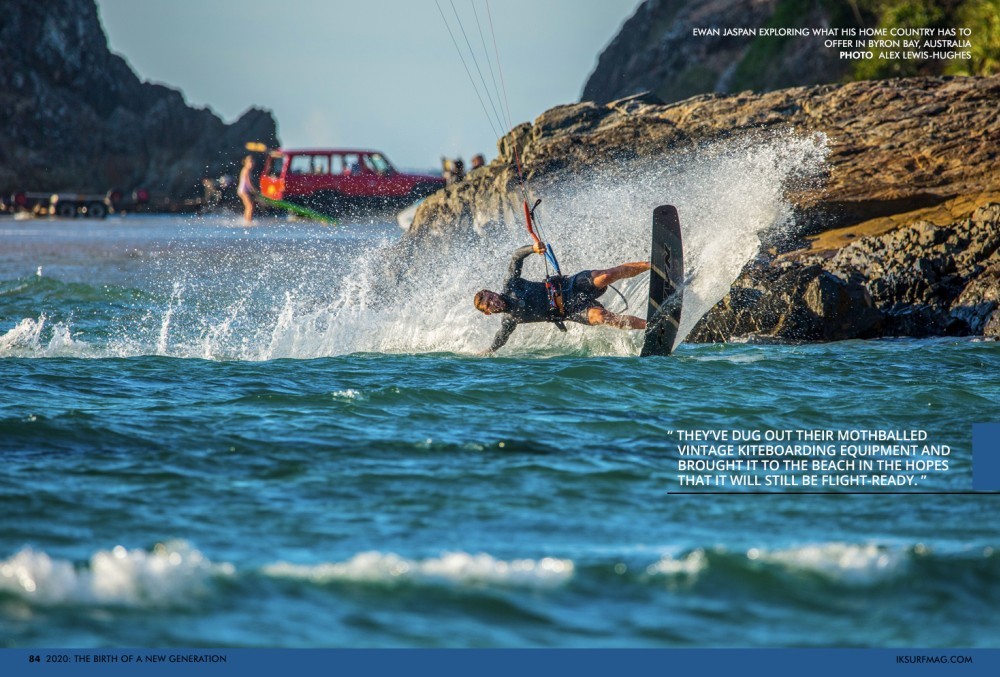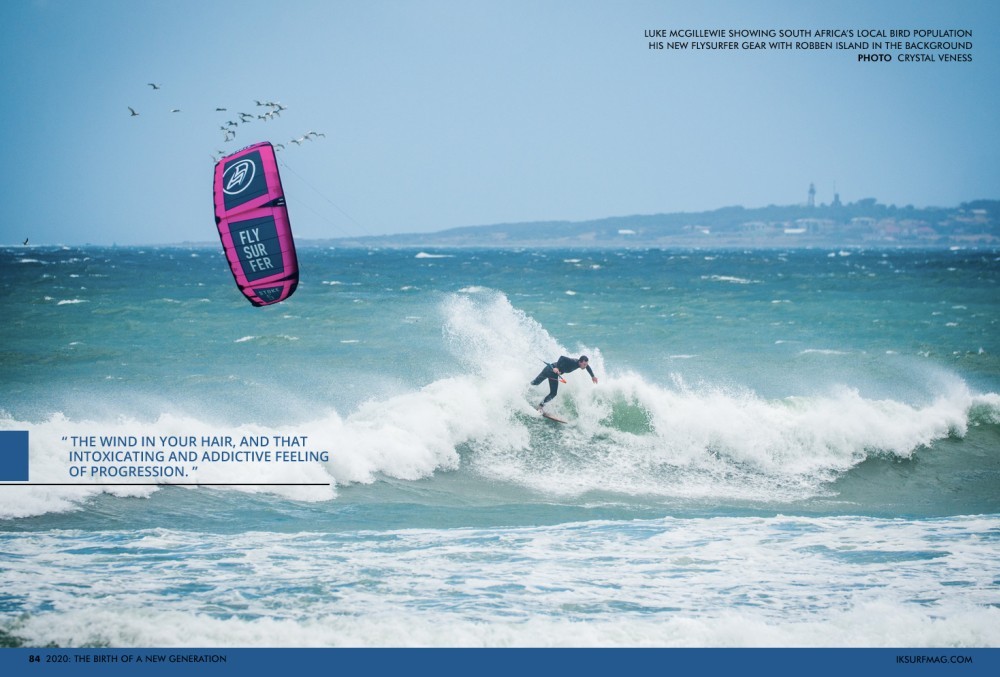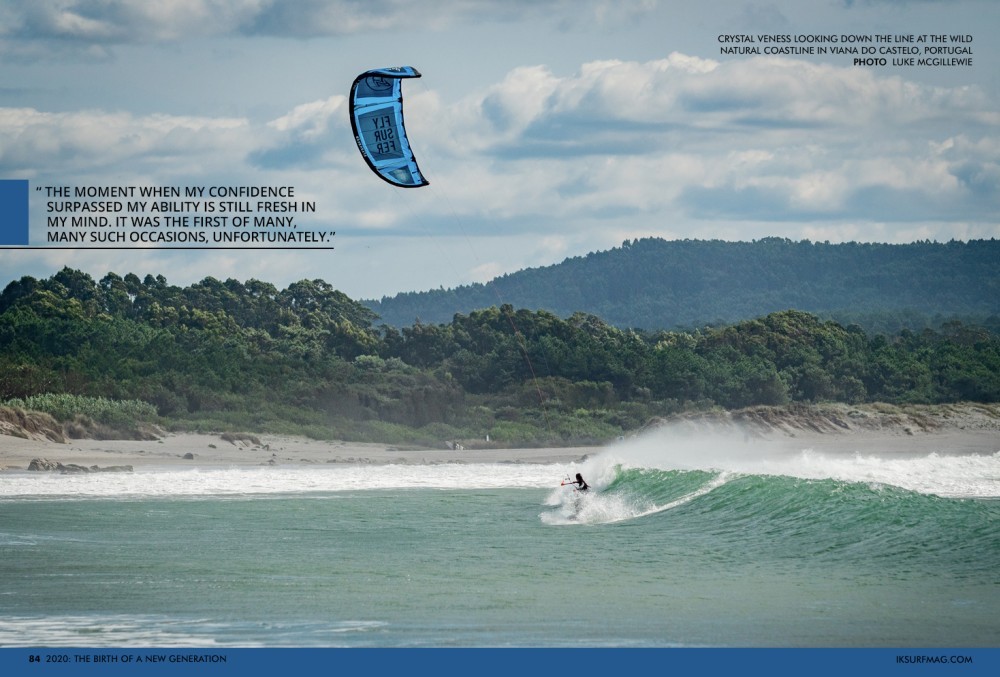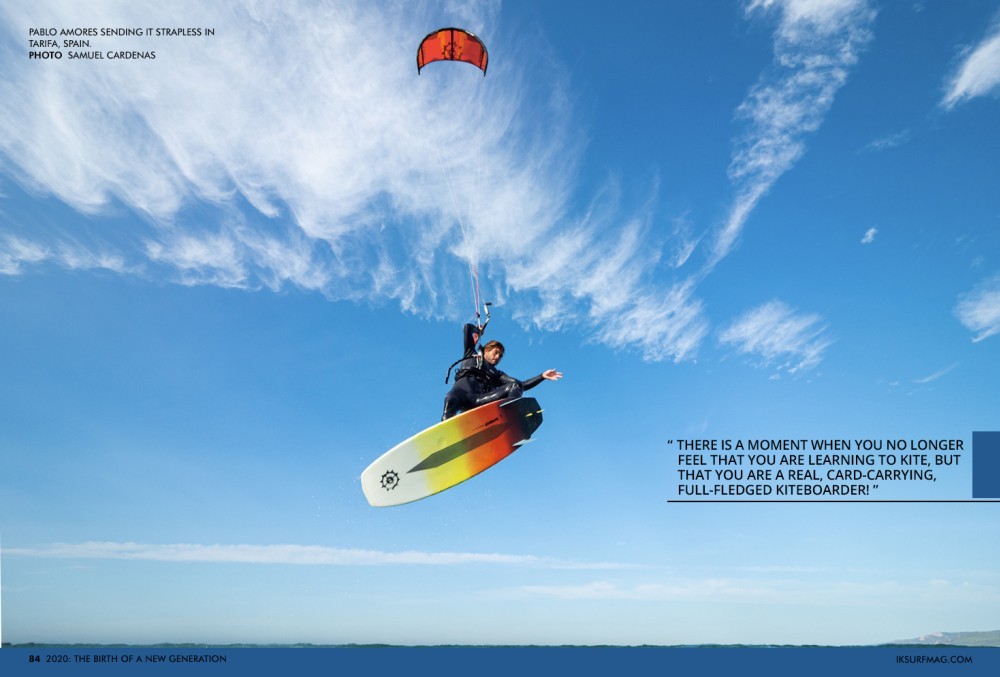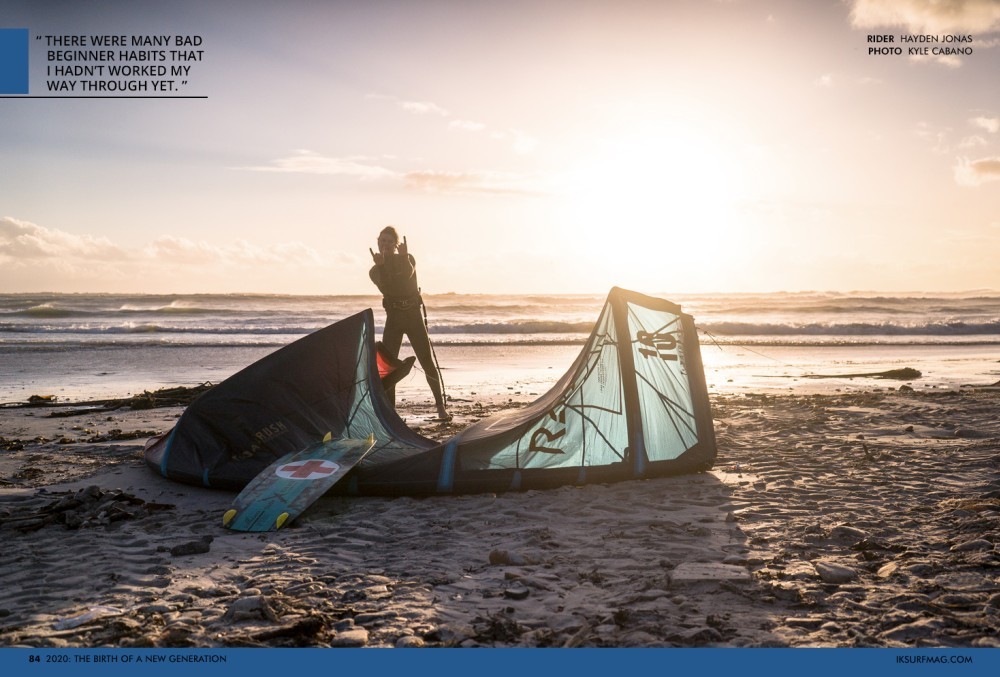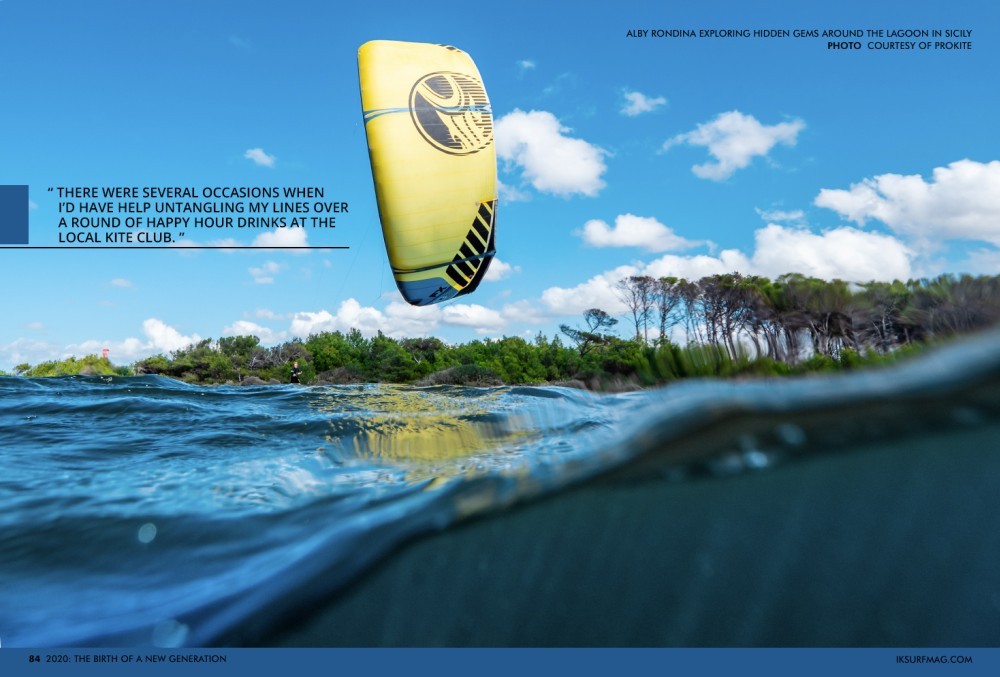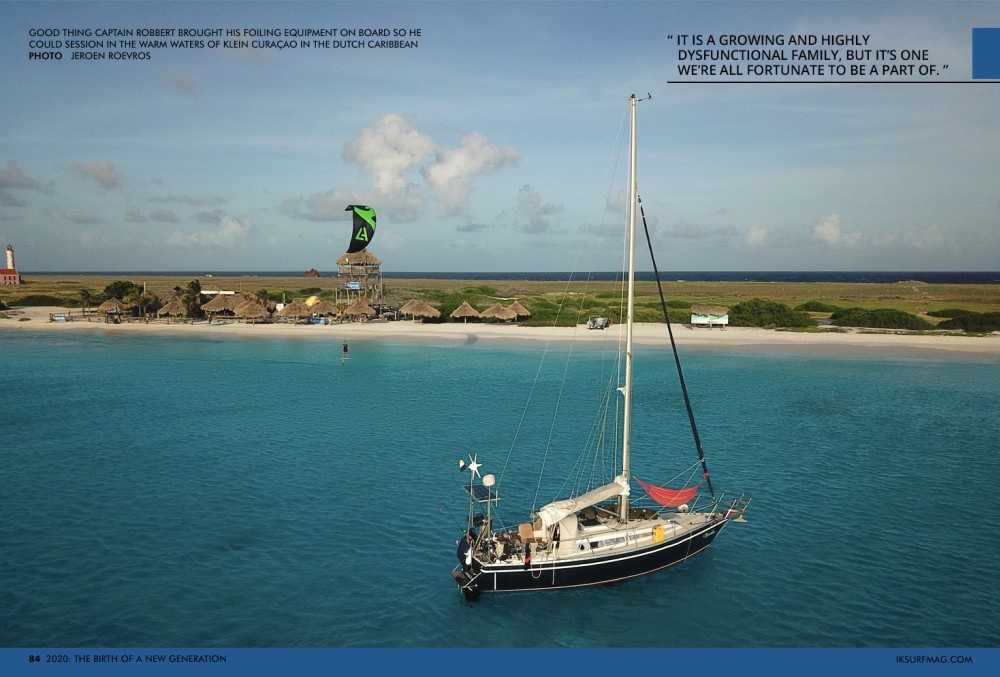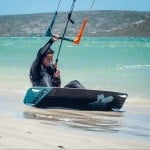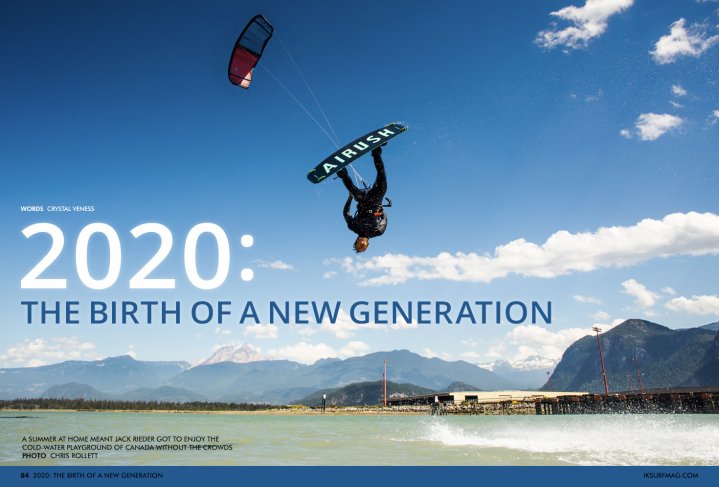
2020: The Birth of a New Generation
Issue 84 / Tue 8th Dec, 2020
The kiting community as we know it is changing. This article takes a look back in time at the ‘beginner kiter’ experience, which is all too relevant at many of our beaches today. How do we evolve along with the arrival of this new generation? Check out the article for some insights from Crystal Veness.
Have you noticed some new faces at your local kite spot? Newly hatched beginner kiters, old school riders with some extra time on their hands, or just your average, every day kiteboarder who finally gave up on the idea of a tropical kiting vacation and pulled out their winter wetsuit… the kiting community as we know it is changing. How do we evolve along with the arrival of this new generation?
As we come to the end of this not-so-normal 2020, many of us are beginning to notice a suspicious increase in baby bumps popping up in our immediate vicinity. An upcoming generation of kitesurfers is undoubtedly on its way.
However, a more pressing matter is upon us: A new generation of adult aged kiters has arrived on kite beaches around the world. In fact, many of you reading this might be a part of this freshly baked batch!
There are the fairweather kiters who are finally desperate enough for a session that they're ready to brave chilly winter weather and less than tropical conditions. There are bucket wearing beginners who may have just finished their lessons and are still getting a grasp of the right of way rules. Then there are the folks that have been a tad bit busy for the last year or ten that are now working from home. With all that free time on their hands, they’ve dug out their mothballed vintage kiteboarding equipment and brought it to the beach in the hopes that it will still be flight-ready.
For those that have been local spot regulars for the past several years, this influx of newly born (or reborn) kiters “at my beach” can be overwhelming, and potentially even a bit irritating. There are undoubtedly upsides and downsides to this growing population. When your local beach is at risk of closing because there have been too many dangerous incidents in past months, or you can't take off for a jump because someone is body-dragging through the landing zone, it’s hard to stay positive.
Is there really an upside? If you're one of the new arrivals, abso-bloody-lutely!! You're experiencing the thrills of kiteboarding, the wind in your hair, and that intoxicating and addictive feeling of progression. You're joining a community that will soon become your family.
If you’re an ‘OG’ kiter, it can be harder to see that silver lining. We can’t look past the benefits of growth in the industry. Many brands, shops, schools, and kiting-adjacent business owners are seeing a marked boost in business, even in a year where uncertainty has prevailed. While it can lead to some crowded water and some kooky behaviour, the unseen benefits of growth in the industry may one day trickle down to us. It may manifest as increased global recognition of our sport, faster technical advancements in gear, or the mythical drop in prices for new kiteboarding equipment. At the very least, there will finally be more people out there to purchase our used kit so we can treat ourselves to some shiny, crispy new gear.
For those that are a little irked by the crowds, may I suggest taking a trip down memory lane to your early days of kiteboarding?
Do you remember the first time you flew a kite? Not a colourful, quadrilateral single line toy, but a two-line or four-line machine with a surprising amount of power. Do you remember that nervous feeling when you were passed the control bar for the first time, and somehow expected to know what to do with it? For some of us, steering a kite was instinctual. For others, keeping the kite in the air was an endless battle.
I remember the 2-metre trainer kite that I wrapped around the mast of a Hobie cat within the first few minutes of flying it. The quiet sigh from the instructor that would have to climb up to detangle it, probably for the hundredth time. When I’d levelled up to the ‘big girl’ kite, I felt like I had such finesse and control over that mighty, flying beast. I can still hear the glowing praise from the instructor who had said that I was a natural. In hindsight, he likely told all of his students that, but that pat on the back had filled me with excitement. Was it possible that I’d finally found a sport that I might actually be good at?
The moment when my confidence surpassed my ability is still fresh in my mind. It was the first of many, many such occasions, unfortunately. I had ended up going heels over head into a prickly bush after my kite had back stalled into the power zone, and I made a critical error when trying to recover it. Did I let go of the bar as soon as I hit the ground? No, I most certainly did not. Did I spend an hour in front of the mirror pulling thorns out of my shoulder afterwards? Why yes, yes I did.
Do you remember your first major kiteboarding mishap? Maybe you had that first false hook on the beach, having to release everything, completely clueless as to how it had gone so wrong. How about bobbing around with your kite in the water struggling to get it back up again? Surely we’ve all been stuck in deep water trying to remember how to self-rescue. Perhaps you even decided it wasn’t worth it, resigned to floating back to the beach with a hopelessly tangled bar. Perhaps I’m just describing more of my own (seemingly endless) mishaps.
If you’re lucky, you are now at the stage where you can look back and laugh at your beginner blunders. Some of you reading today, however, are still in the midst of that very frustrating reality. Don’t fear! There is a light at the end of the tunnel. We’ve all been there. There is a moment when you no longer feel that you are learning to kite, but that you are a real, card-carrying, full-fledged kiteboarder!
When I was still learning to kite, I spent some time in the Dominican Republic, thrilled by this incredible new sport and so very happy to be outside of cold, wintery Canada in favour of the tropical water and endless sandy beaches of Cabarete. I arrived with a lot of confidence and readiness to learn how to jump and finally stick that blasted backroll.
Looking back on those early days, I had unwittingly made my journey more difficult before it had even begun. Without kiting friends or a community to fall back on, I had purchased a kite that was too advanced for my level. A difficult kite combined with a much too small board made riding upwind a constant battle. Embarrassingly enough, I was also trying way too hard to do jumps and learn how to unhook - so I could sit at the cool kid's table - instead of building a strong foundation of basic riding skills.
Instead of becoming that totally badass kiteboarding chick that I was picturing in my mind, I stayed busy getting my steps in with a walk of shame every day for at least the first 30 days. I remember shedding a few tears of frustration amid one particularly long walk back upwind with heavy, wet, sandy gear. I felt like I was in the way all the time, and had gotten shouted at and flipped off by (yet another) kiter that I’d inadvertently upset. It could have been for one of many reasons, for there were many bad beginner habits that I hadn’t worked my way through yet. I was still taking a bit too long to set up my gear and sort myself out, which was not ideal on a crowded beach. I’d often be dropping my kite after a particularly heavy tumble trying to get out in big shore break. I’ll even admit that I would sometimes forget to look over my shoulder before stopping or turning. When others came too close, I would panic and drop into the water with my kite at 12, even though that usually meant I was even more in the way of passing kiters. This one earned me a fair share of stern words!
As grim as that part of my kiting life sometimes was, I won’t forget the kindness of the kitesurfing strangers. I had many a board rescue after one of my many yard sale wipeouts. There were several occasions when I’d have help untangling my lines over a round of happy hour drinks at the local kite club. I received some much-appreciated tips on all sorts of techniques, like how to trim my quite properly, manage heavy shore break, and even how to adjust my stance to ride upwind better. What took only a minute out of someone else’s day became a game-changer for me!
For the frustrated kiters out there, think back to how people treated you when you were still learning to fly. Were you ever intimidated by the confident, experienced crew that seemed to own the local spot? Put off by sour-faced surfers that looked the other away when you tapped your head for a landing? That looked on in amusement as you struggled with setting up your equipment and laughed as you floundered? I can only hope that you didn’t experience that, but I am almost certain that you’ve seen it happen. It’s even possible that we may have become those people in some ways, without realising that our last shreds of patience have been slowly slipping away.
If you’re one of that old guard of kiteboarders out there struggling to be nice to the new arrivals, may I suggest that you remember your own experience as a newborn kitesurfer. Choose kindness, and look for a chance to share your knowledge and provide support. You might save somebody’s session, or be that turning point in a new kiter’s journey.
To our new friends in this growing kiteboarding community, try not to worry about looking cool! Ask questions and be open to advice. Take your time and make safety a priority. Don’t miss out on the post-session beverage with your fellow kiters - at a reasonable distance, of course!
This is what makes kitesurfing so special. We all love the wind and the water and don’t mind putting ourselves through the wringer to jump just a little bit higher or get just a few more minutes on the water before the sun sets. We are all part of a global family full of incredible people. It is a growing and highly dysfunctional family, but it’s one we’re all fortunate to be a part of. As they say, we're all in this together.
By Crystal Veness
Editor at IKSURFMAG, Crystal Veness hails from Canada but is based in South Africa. When she isn't busy kitesurfing or reporting on the latest industry news for the mag, she is kicking back somewhere at a windy kite beach or working on creative media projects.




